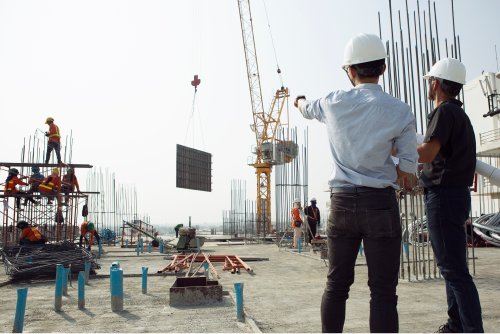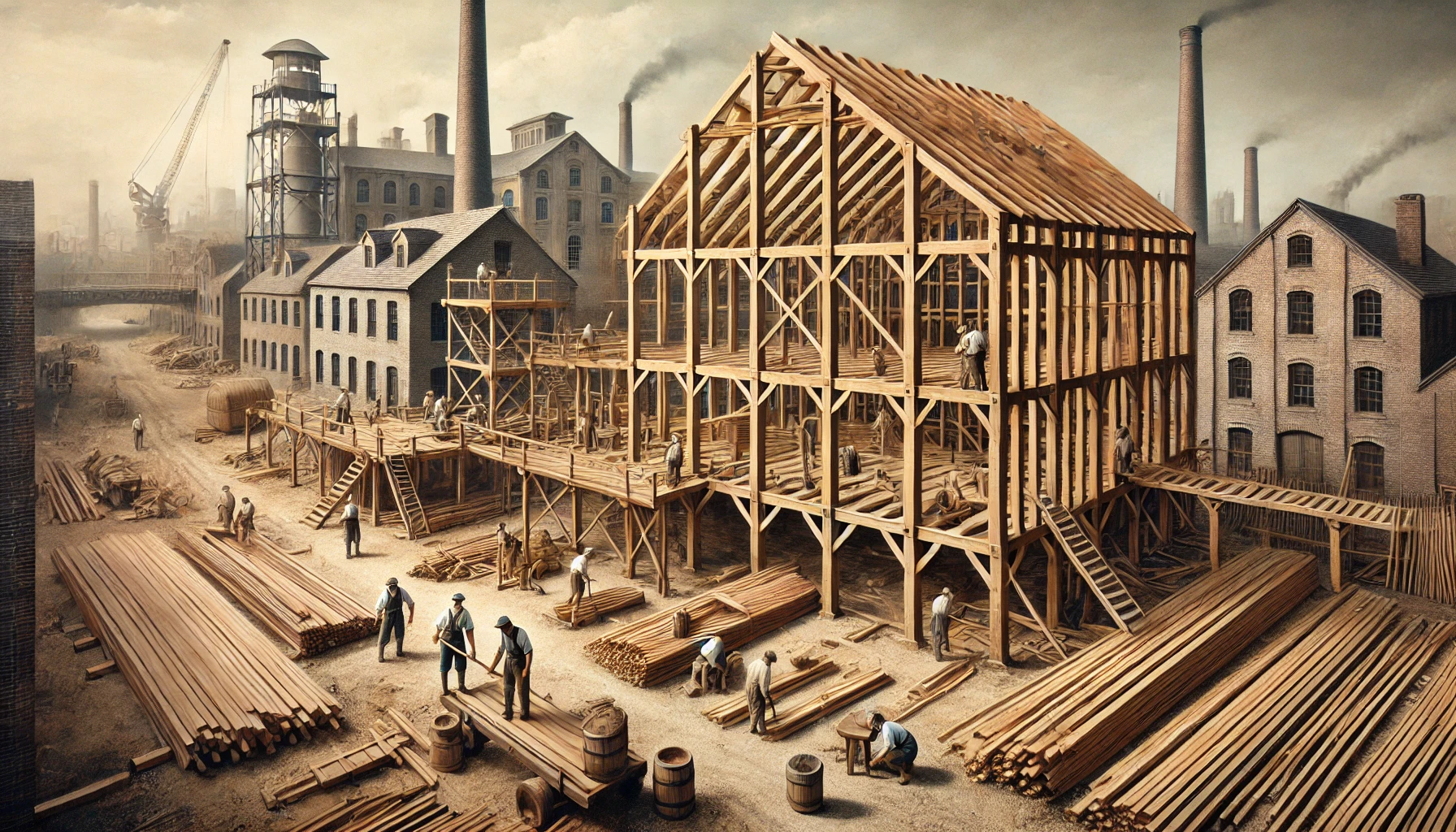Addressing Modern Construction Challenges
In a world where buildings consume nearly half of global energy and climate extremes are becoming the norm, the construction industry is under immense pressure to adapt and innovate. The challenges of energy inefficiency, labor shortages, and the need for disaster-resilient solutions demand a smarter approach to building.
Buildings are responsible for a significant 40% of global energy consumption, translating to an average of $2,000 annually in energy costs for homeowners—a financial burden that highlights the urgent need for more efficient construction solutions. At the same time, increasingly extreme weather events, such as Hurricane Michael’s 250 MPH winds in 2018, have revealed the limitations of traditional construction methods in providing resilience and protection.
Monolith’s Polyurethane ICF system (Insulated Concrete Forms) rises to these challenges by delivering unmatched insulation, structural strength, and adaptability. It offers a smarter, more efficient alternative to outdated systems like CMU, which, while reliable for decades, struggle to meet the energy, labor, and resilience demands of today.
The following comparison illustrates how Monolith ICF surpasses CMU in critical performance areas. We will explore design, energy efficiency, labor savings, construction speed, and long-term durability, highlighting Monolith ICF’s unmatched energy efficiency, reduced labor demands, streamlined construction timelines, and superior long-term durability—key benefits that address modern building challenges head-on.
1. Structural Design
CMU: Layered Complexity
CMU relies on individual concrete blocks (8″ x 8″ x 16″) assembled with mortar joints. Achieving modern performance standards requires additional components like insulation, vapor barriers, and reinforcements. Mortar joints reduce lateral resistance and increase environmental vulnerability, demanding skilled trades and precise coordination.
ICF: Integrated Simplicity
Monolith ICF combines 7 functions into one system:
- Structure
- Insulation
- Vapor barrier
- Fire resistance
- Air barrier
- Sound barrier
- Attachment points for finishes
The continuous concrete core eliminates mortar joints, ensuring superior durability. Large-format blocks simplify installation and minimize weak points.
2. Energy Efficiency
| Feature | CMU | Monolith ICF |
|---|---|---|
| R-Value | 2-3 | R-33 (6.5 per inch) |
| Thermal Performance | Requires additional insulation | Integrated insulation with no air gaps |
| HVAC Impact | Higher HVAC energy consumption | Reduces HVAC energy use by 30-40% |
| Cost Implication | Additional costs for insulation | Lower energy bills and smaller HVAC systems |
CMU: Limited Thermal Resistance
With a base R-value of 2-3, CMU requires additional insulation systems to meet energy standards, adding cost and complexity. Mortar joints allow air infiltration, increasing HVAC demands and utility costs.
ICF: Superior Thermal Performance
Monolith ICF delivers an R-33 total wall system with 6.5 R-value per inch of polyurethane insulation. Closed-cell technology eliminates air infiltration, reducing HVAC energy consumption by 30-40%, stabilizing temperatures, and lowering operating costs.
3. Labor Requirements
CMU: Skilled Labor Dependency
CMU construction requires skilled masonry crews for laying blocks and applying mortar, driving up labor costs by as much as 30% compared to systems like Monolith ICF. Additionally, insulation, vapor barriers, and finishing systems must be installed separately, often requiring multiple trades and precise coordination. This layered approach increases cumulative expenses and adds complexity to the construction process.
CMU construction is also weather-sensitive. Mortar application requires specific conditions, and adverse weather—like freezing temperatures or rain—can delay progress, complicating scheduling and increasing costs.
ICF: Simplified Installation
Monolith ICF streamlines construction with a versatile design that general construction crews can install with minimal training. By integrating structure, insulation, and vapor barriers into one system, Monolith ICF eliminates the need for specialized labor and multiple trades. Its weather-independent installation allows for year-round progress, ensuring steady timelines even in unpredictable climates.
The lightweight, large-format blocks are easy to handle, simplifying positioning and reducing installation time. This combination of labor efficiency and all-weather capability helps builders minimize delays and control costs effectively.
4. Construction Timeline
CMU: Sequential Installation
CMU construction follows a step-by-step process requiring:
- Careful scheduling and trade coordination.
- Installation of structure, insulation, vapor barriers, and finishes in separate phases.
- Weather-sensitive mortar application, which can delay progress in cold or wet conditions.
This linear process often extends project timelines due to multiple inspections and trade dependencies.
ICF: Streamlined Assembly
Monolith ICF revolutionizes the timeline with an integrated 7-in-1 system, enabling:
- Simultaneous installation of structure, insulation, and barriers.
- Up to 50% faster construction compared to CMU.
- All-weather installation capability, ensuring uninterrupted progress year-round.
The streamlined process minimizes trade overlap, reduces inspection points, and accelerates project completion.
5. Strength, Durability, and Disaster Resilience
CMU: Proven but Limited
CMU relies on individual concrete blocks joined with mortar, which creates stress points that are prone to cracking under pressure or environmental forces like seismic activity or heavy winds. While reinforcements can improve lateral force resistance, they require additional engineering and add complexity to the construction process. Furthermore, exposed components of CMU walls need additional coatings or protection to ensure long-term durability, particularly in harsh climates.
CMU walls also require extensive modifications to meet modern disaster resilience standards. For instance, hurricane-prone areas require additional tie-down systems and reinforcements, adding cost and complexity without achieving the unified strength of modern alternatives.
ICF: Built for Extreme Conditions
Monolith ICF provides unparalleled structural strength and disaster resilience with its monolithic, continuous concrete core and integrated reinforcement grid:
- 1.8x Greater Compressive Strength: Ensures stability under heavy loads and seismic activity.
- Hurricane Resistance: Withstands winds exceeding 250 MPH and resists impact from wind-borne debris.
- Seismic Resilience: Distributes seismic forces evenly, minimizing structural damage.
- Moisture and Fire Protection: Closed-cell polyurethane resists water absorption, mold growth, and achieves fire ratings of 3+ hours.
Real-world testing and documented survival stories, such as buildings enduring Category 5 hurricanes, including the well-documented Sand Palace home in Florida, which remained standing amidst devastation during Hurricane Michael, provide concrete proof of Monolith ICF’s superior durability.
6. Long-Term Performance
CMU: Ongoing Maintenance
CMU construction, while durable, demands significant upkeep over time. Mortar joints are particularly prone to cracking under thermal expansion, freeze-thaw cycles, or stress from environmental forces. This requires regular inspections, repairs, and resealing to maintain structural integrity. Additionally, CMU walls often rely on external water barriers and insulation systems, which degrade over time, leading to increased risks of moisture infiltration, pest infestation, and mold growth—all of which elevate long-term maintenance costs.
ICF: Low Maintenance, Long Lifespan
Monolith ICF offers a virtually maintenance-free solution with its robust design and materials:
- Freeze-Thaw Resistance: The closed-cell polyurethane prevents water absorption, eliminating risks of cracking or degradation from freeze-thaw cycles.
- Moisture and Mold Protection: The continuous insulation and airtight barrier prevent moisture penetration, significantly reducing mold growth.
- Pest Resistance: Unlike traditional systems, Monolith ICF’s concrete core and polyurethane structure naturally deter pests, eliminating the need for chemical treatments or additional barriers.
By integrating these features, Monolith ICF delivers unmatched longevity, ensuring lower maintenance costs over decades while retaining structural performance and energy efficiency.
7. Cost Analysis
CMU: Lower Material Costs, Higher Complexity
While CMU materials may appear cost-effective initially, their true costs extend far beyond the material price. For instance, a 3,000-square-foot home built with CMU may cost $12-$15 per square foot for materials, but additional labor costs, specialized trades, and components like insulation and vapor barriers can increase the total cost to $25 per square foot. Furthermore, CMU’s limited R-value results in higher long-term energy expenses, adding up to $30,000 or more over 30 years.
ICF: Streamlined Costs and ROI
While Monolith ICF may have a higher upfront material cost, costs approximately $20-$22 per square foot it delivers significant value across the entire project lifecycle:
- Lower Labor Needs: Simplified installation reduces reliance on skilled labor, cutting labor costs.
- Energy Efficiency: With energy savings of 30-40%, annual HVAC costs can be reduced by up to $1,000, driving long-term operational savings.
- Faster Timelines: Monolith ICF accelerates construction by up to 50%, minimizing labor, financing, and overhead costs.
- Reduced Maintenance: Its durable, moisture-resistant design eliminates many ongoing repair needs, saving additional costs.
- Higher Resale Value: Disaster resilience and energy efficiency make Monolith ICF buildings highly attractive to buyers, increasing long-term property value.
By combining upfront simplicity with substantial long-term savings, Monolith ICF provides an exceptional return on investment, addressing construction efficiency, durability, and energy performance in one integrated solution.
Conclusion
Monolith’s Polyurethane ICF system offers a comprehensive solution for modern construction, addressing critical challenges like energy inefficiency, labor shortages, and disaster resilience.
- Speeds up construction timelines by up to 50%.
- Delivers unmatched energy savings with an R-33 insulation rating.
- Protects structures against extreme conditions, from 250 MPH winds to fire ratings of 3+ hours.
- Reduces long-term maintenance costs with moisture and pest resistance.
By combining simplicity, efficiency, and unmatched durability, Monolith ICF improves project profitability and creates buildings that are safer, stronger, and more sustainable.
Ready to get started on your next project?
Learn more about Monolith ICF today by scheduling a consultation with our team or downloading our detailed guide. Discover how you can build faster, stronger, and more efficiently with industry-leading solutions tailored to your project needs.












